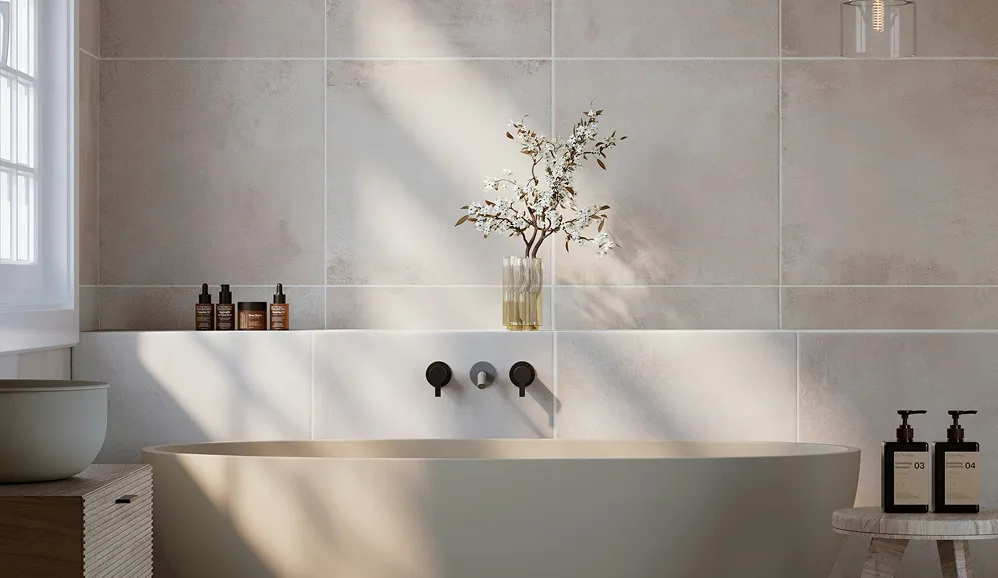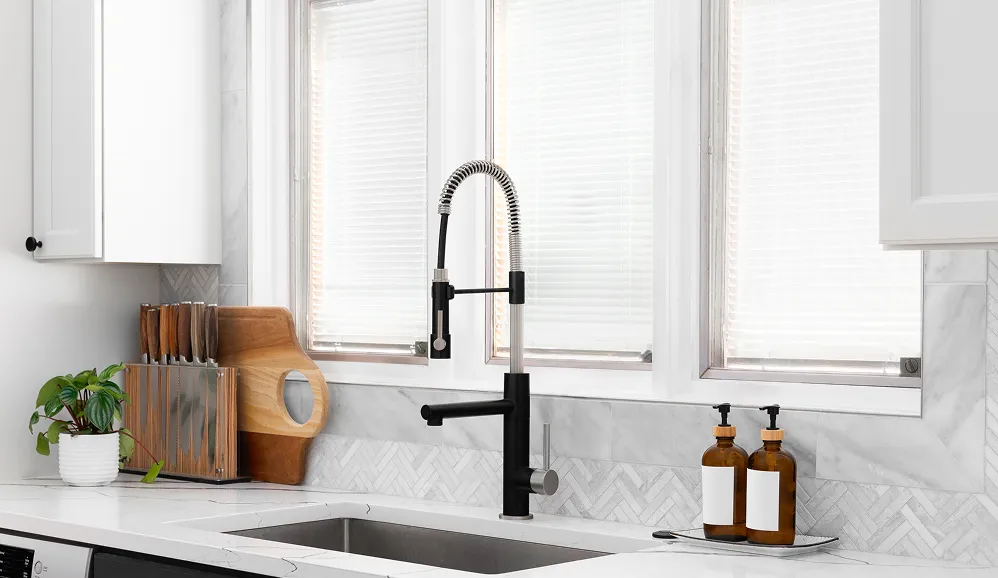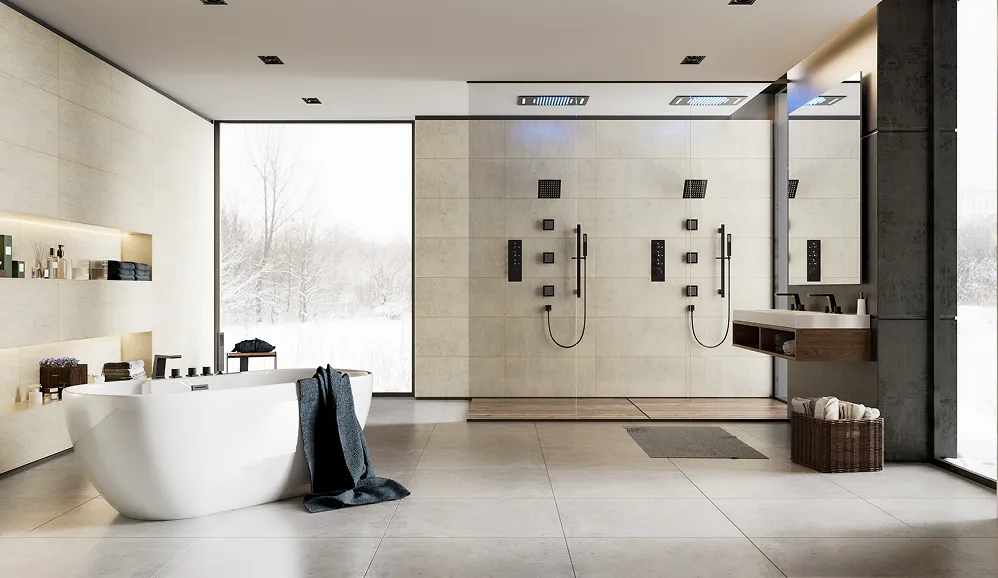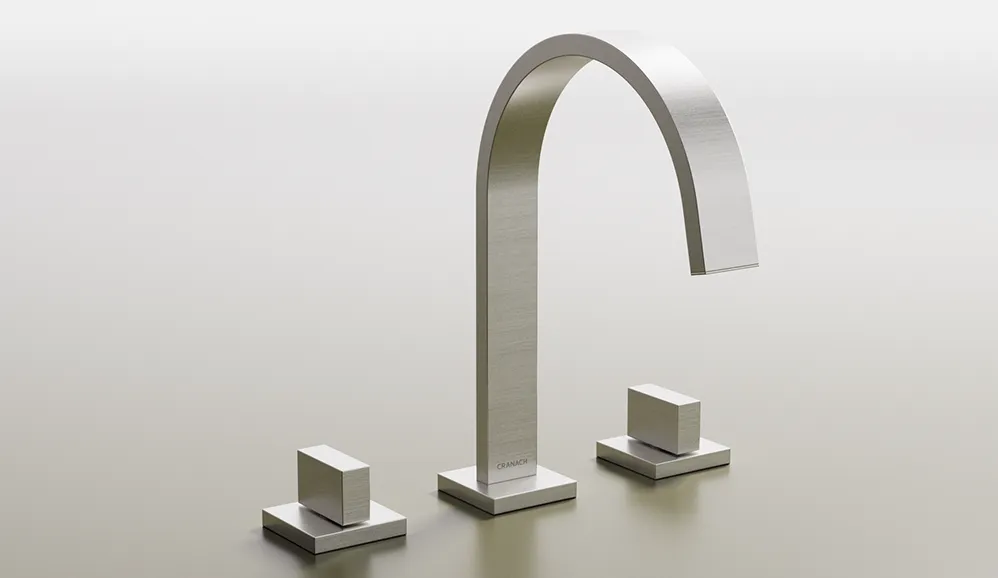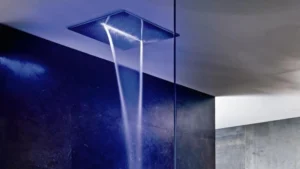Why Regular Faucet Cleaning Transforms Your Bathroom
A truly clean bathroom should feel like a personal sanctuary, a space dedicated to relaxation and rejuvenation. Often, the smallest details make the biggest difference. Something as simple as regularly cleaning your bathroom faucets can significantly elevate both the atmosphere and hygiene of your bathroom.
It’s not just about aesthetics. Consistent faucet cleaning contributes to a healthier, more functional space. Ignoring this simple task can lead to the buildup of unsightly mineral deposits, which can harbor bacteria and ultimately shorten the lifespan of your fixtures.
Regular cleaning is a small investment that pays off big in the long run. It’s a proactive step towards protecting the health of your bathroom and ensuring its longevity.
The Hidden Dangers of Mineral Buildup
That chalky white film you see on your faucet isn’t just an eyesore; it’s a clear sign of mineral deposits. While visually unappealing, these deposits, often a consequence of hard water, can cause serious problems beneath the surface.
Over time, mineral buildup accumulates within the faucet’s internal mechanisms. This restricts water flow, leading to reduced water pressure and potentially costly repairs or even full replacements down the line. Furthermore, the rough texture of the deposits creates an ideal environment for bacteria to thrive, compromising the overall hygiene of your bathroom.
Healthier Faucets, Healthier Bathroom
Regular faucet cleaning isn’t just about the fixtures themselves; it directly impacts the overall health of your bathroom environment. Removing mineral buildup and bacteria improves the quality of your water.
Cleaner water contributes to better hygiene practices, especially handwashing, and reduces the potential spread of germs. This simple act of cleaning plays a significant role in creating a healthier and more sanitary bathroom space.
Extending the Life of Your Fixtures
Regularly cleaning your bathroom faucets is essential for maintaining their longevity and pristine appearance. This consistent care prevents corrosion and ensures smooth operation, maximizing the life of your fixtures.
A good rule of thumb is to clean your faucets every two weeks. However, depending on your water quality and usage, you may need to adjust this frequency. Areas with hard water often require more frequent cleaning due to rapid mineral buildup.
When cleaning, use a soft cloth and a mild soap solution to avoid damaging the faucet’s finish. This gentle approach preserves the faucet’s aesthetic appeal and contributes to overall bathroom hygiene.
By adopting these simple habits, even with budget-friendly fixtures, you can significantly extend their lifespan and avoid premature replacements. Regular cleaning is a small investment that protects your investment and keeps your bathroom looking its best for years to come.
Selecting Cleaning Agents That Won’t Damage Finishes
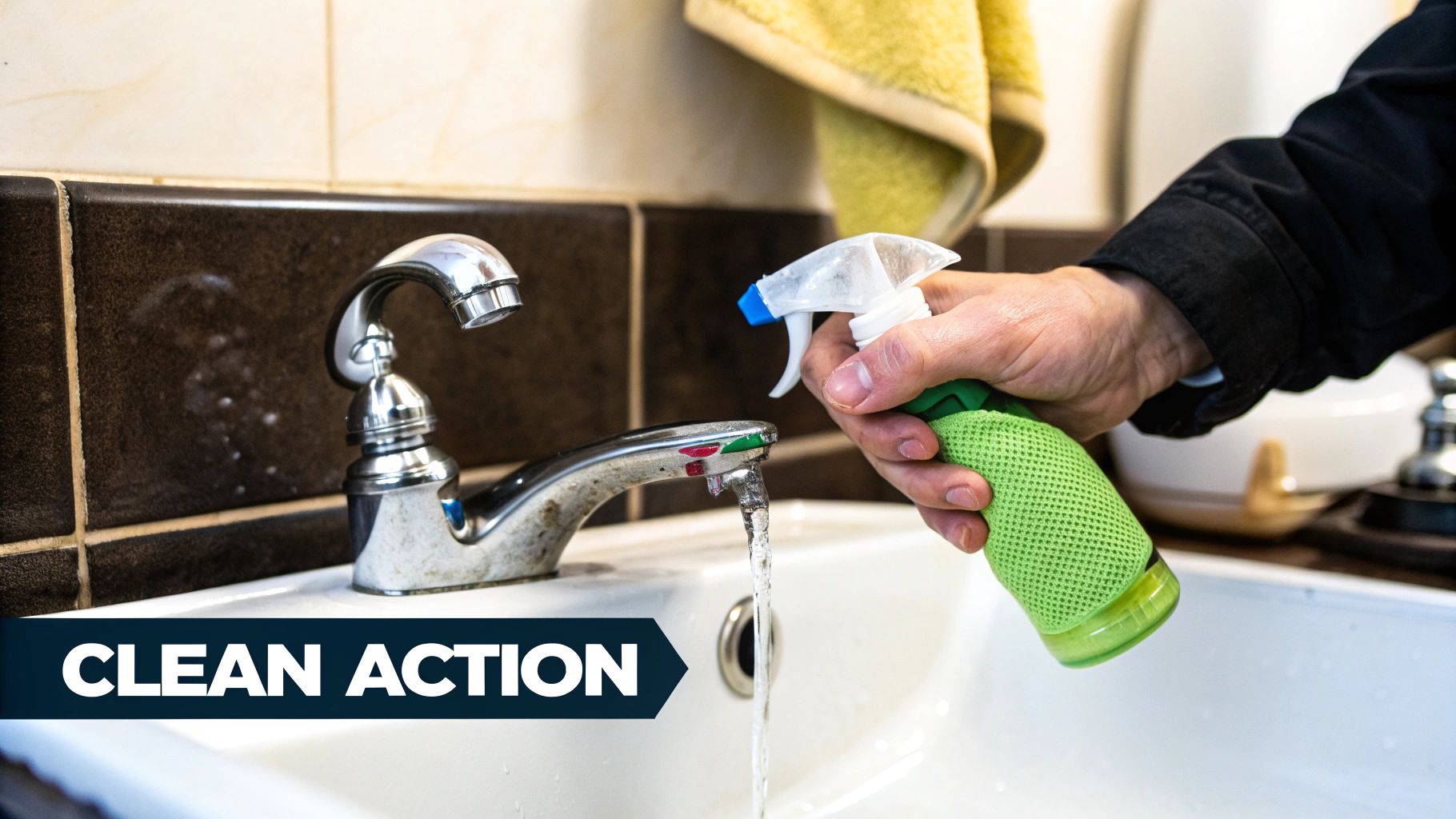
Maintaining the gleaming beauty of your bathroom faucets requires careful consideration of your cleaning products. Choosing the wrong agent can dull or damage the finish, impacting your bathroom’s overall aesthetic. This section explores the crucial process of selecting cleaning agents that effectively clean while preserving your faucets’ finish.
Identifying Harmful Ingredients
Many commercially available “all-purpose” cleaners contain harsh chemicals. These can etch, corrode, or damage the protective coatings on your faucets. Abrasive cleaners, for example, can scratch surfaces. Acidic cleaners can eat away at the finish. Even seemingly harmless soaps can leave a dulling residue over time. Understanding the ingredients in your cleaning products is paramount. This knowledge allows you to make informed decisions that protect your investment in quality bathroom fixtures.
You might be interested in: How to master different faucet finishes
Gentle Cleaning Solutions For Lasting Shine
The right cleaning agents are critical for bathroom faucets. Harsh cleaners, soaps, and acids can damage the finish. Mild, non-abrasive solutions are a safer bet. A simple mixture of equal parts white vinegar and water, for instance, effectively removes hard water stains without harming the faucet. A toothbrush dipped in this solution can clean hard-to-reach areas. This method is especially useful in areas with hard water where mineral deposits are common. Gentle cleaning methods help maintain the shine and integrity of your faucets.
This vinegar solution offers a safe and effective way to tackle common bathroom grime. However, different stains and water conditions might require a more specific approach. Understanding the type of buildup you’re dealing with is essential for choosing the right cleaning method.
Matching Cleaners to Specific Stains
Not all stains are the same. Soap scum, hard water deposits, and rust each require a slightly different cleaning approach. While the vinegar solution is excellent for hard water stains, it might not be as effective on soap scum.
To help you choose the right cleaner, let’s look at some recommendations:
- Soap Scum: A mixture of baking soda and dish soap can effectively break down soap scum without harming the finish.
- Rust Stains: A paste of lemon juice and salt can help lift rust stains without being too abrasive.
- Hard Water Deposits: For particularly stubborn hard water deposits, try soaking a cloth in vinegar and wrapping it around the affected area for a more concentrated cleaning action.
Experimenting with different natural cleaners and techniques can help you find what works best for your specific faucet type and water conditions.
The table below provides a more detailed overview of cleaning solutions and their application:
Recommended Cleaning Agents for Different Stains: A comparison of various cleaning agents and their effectiveness on common faucet stains
| Cleaning Agent | Best For | Application Method | Safety Considerations |
|---|---|---|---|
| White Vinegar and Water Solution (equal parts) | Hard water stains, general cleaning | Spray or soak a cloth and apply | Safe for most finishes, but test on a small area first |
| Baking Soda and Dish Soap Paste | Soap scum | Apply paste, let sit, and scrub gently | Gentle on most finishes |
| Lemon Juice and Salt Paste | Rust stains | Apply paste, let sit, and scrub gently | Can be abrasive, use cautiously on delicate finishes |
As you can see, different cleaning agents are better suited for specific types of stains. Selecting the appropriate cleaner can make a significant difference in maintaining your faucets.
By understanding the nuances of different cleaning agents and their effectiveness on various stains, you can preserve the beauty and longevity of your bathroom faucets. This proactive approach not only saves you money on costly replacements but also ensures a sparkling, hygienic bathroom.
Cleaning Bathroom Faucets: The Professional Method
Now that we’ve covered the importance of selecting the right cleaning products, let’s explore how professionals clean bathroom faucets. This isn’t a quick wipe-down; it’s a deep clean that tackles hidden bacteria and mineral deposits, leaving your fixtures gleaming. A key part of this process is preventing trapped moisture, a major cause of corrosion.
Disassembling and Deep Cleaning
Professional cleaners know the secret lies in those often-forgotten nooks and crannies. This involves carefully disassembling parts of the faucet, like the aerator. The aerator, that little mesh screen at the end of the spout, mixes air with water but also traps mineral buildup. Removing and cleaning it makes a huge difference in water flow. You might be interested in: How to master faucet installation and parts.
Soak the aerator in vinegar to dissolve the mineral deposits. While it soaks, tackle the faucet itself. A toothbrush is perfect for scrubbing around the base and handles, getting into tight spots a cloth can’t reach. Gentle pressure is key to avoid scratching the finish. This removes the stubborn grime that accumulates over time.
The Precise Cleaning Sequence
Pros have a specific cleaning sequence to maximize efficiency and prevent re-contamination. They work from top to bottom, starting with the handles and moving down to the spout and base. This stops dirty water from dripping onto already-cleaned surfaces. They also focus on where the faucet meets the sink, a common spot for grime and moisture.
The Importance of Proper Drying
The final, often overlooked step, is thorough drying. This prevents water spots and future mineral buildup. Buff the entire faucet with a clean, dry microfiber cloth. This removes any remaining moisture and creates a protective barrier against future spots, much like waxing a car.
Time-Saving Shortcuts and Maintenance
While deep cleans are essential, regular maintenance can save you time. Wiping down faucets after each use prevents water spots and soap scum buildup. This small habit makes a big difference.
Maintaining a Just-Cleaned Look
Keeping your faucets sparkling is easy with a few simple steps:
- Daily Wipe-Down: A quick wipe after each use prevents buildup.
- Vinegar Spray: A diluted vinegar spray is great for touch-ups.
- Microfiber Cloths: These are ideal for cleaning and drying without scratching.
To help illustrate a good cleaning schedule, take a look at the table below:
Cleaning Timeline for Bathroom Faucets: Recommended cleaning frequency and tasks based on water type and usage
| Cleaning Task | Frequency (Soft Water) | Frequency (Hard Water) | Time Required |
|---|---|---|---|
| Quick Wipe-Down | Daily | Daily | 1 minute |
| Vinegar Spray Touch-Up | Weekly | Every 2-3 days | 2 minutes |
| Deep Clean with Disassembly | Monthly | Bi-weekly | 15-20 minutes |
This table outlines how often you should clean your faucets based on your water type. As you can see, even small tasks like a daily wipe-down can significantly reduce the need for more frequent deep cleans.
By following these professional methods, your bathroom faucets can achieve a showroom shine. This not only enhances your bathroom’s appearance but also creates a healthier, more hygienic space.
Material-Specific Techniques That Preserve Your Investment
Just as delicate fabrics require special care, so do your bathroom faucets. Cleaning them effectively means understanding the nuances of each material. What works for chrome might damage brushed nickel, so a tailored approach is crucial. This knowledge protects your investment and keeps your fixtures looking their best.
For example, certain cleaning methods can scratch delicate finishes, while others benefit from polishing. Even water temperature plays a role, affecting cleaning effectiveness on various metals.
Decoding the Needs of Each Material
The material of your faucet dictates its cleaning needs. Common materials include chrome, stainless steel, brass, and nickel, each with specific requirements. Chrome often responds well to mild soap and a soft cloth. Stainless steel, on the other hand, might benefit from a gentle polish to retain its shine.
Understanding the material composition helps you choose the right cleaning products and techniques. This ensures your faucet stays in top condition. Explore this topic further. Knowing your faucet’s material is the first step toward effective cleaning and preservation.
Chrome: The Classic Choice
Chrome faucets are known for durability and shine. They’re generally easy to maintain. Mild dish soap and water, applied with a soft cloth, usually does the trick. Avoid abrasive cleaners or scrub brushes, as these can scratch the finish.
For tough water spots, diluted vinegar can be helpful. Learn more about water flow and its effect on faucet cleaning. Drying the faucet after each use helps prevent water spots and maintains that classic chrome gleam.
Stainless Steel: The Modern Staple
Stainless steel faucets offer a sleek, modern aesthetic. They’re also resistant to rust and corrosion. However, they do tend to show fingerprints and water spots. Cleaning stainless steel requires a specific approach.
A specialized stainless steel cleaner is recommended, formulated to remove marks without damage. A vinegar and water solution can also work well. Wiping in the direction of the grain prevents streaks and keeps the appearance consistent.
Brass and Nickel: The Elegant Options
Brass and nickel add a touch of elegance. But these finishes require gentle care. Avoid abrasive cleaners and harsh chemicals, which can tarnish or discolor them.
A soft cloth and mild soap solution are best for regular cleaning. For stubborn stains, a paste of baking soda and water can be applied gently, left for a few minutes, and then rinsed thoroughly. A protective wax or sealant designed for brass or nickel can help prevent tarnish and preserve their luster. This extra step makes a big difference in maintaining their beauty.
By understanding the specific cleaning needs of each material, you can clean your bathroom faucets effectively and avoid damage. This approach not only preserves their appearance but also extends their lifespan, ensuring your investment lasts.
Conquering Stubborn Buildup Without Damaging Fixtures
Even with regular cleaning and the right products, stubborn buildup can still plague your bathroom faucets. Sometimes, you need more specialized techniques to address the root of the problem without harsh chemicals that might damage your fixtures. Let’s explore how to conquer that stubborn buildup and restore your faucets to their original shine.
Understanding the Science of Stubborn Buildup
Stubborn mineral deposits, often caused by hard water, cling tightly to faucet surfaces. These deposits, primarily calcium and lime, create a tough, almost crystalline structure resistant to typical cleaning methods. To remove them effectively, you need to understand how to break down these bonds without harming the underlying fixture material.
Think of it like rust. Rust isn’t just a surface stain; it’s a chemical reaction between iron, oxygen, and water. Similarly, hard water deposits are a chemical buildup requiring a targeted removal approach. This often involves dissolving the mineral deposits, rather than simply scrubbing them away.
Dissolving Calcium Buildup
Soaking a cloth in vinegar and wrapping it around the affected area is a highly effective method. The acetic acid in vinegar helps dissolve calcium buildup, and the soaked cloth concentrates the treatment. This allows the vinegar to work directly on the mineral deposits for maximum impact. Learn more in our article about various bathroom cleaning tips.
Removing Rust Stains Without Abrasion
Rust stains, common on older faucets, require a different tactic. A paste of lemon juice and salt can work wonders. The acidity of the lemon juice helps loosen the rust, while the salt provides gentle abrasion to lift the stain. However, use this method cautiously on delicate finishes, as too much scrubbing can scratch the surface.
Tackling Water Spots
Those annoying water spots that reappear shortly after cleaning are often due to dissolved minerals left behind as the water evaporates. Preventing these spots involves more than just wiping the faucet dry. Buffing the faucet with a microfiber cloth after drying creates a protective barrier that minimizes spotting and adds a nice shine.
Professional Tips and Tricks
Professional cleaners often utilize specific dwell times – the amount of time a cleaning solution sits on the buildup – to maximize effectiveness.
Here are a few professional tips:
- For calcium buildup, a dwell time of 15-20 minutes with a vinegar-soaked cloth is usually sufficient.
- For rust stains, let the lemon juice and salt paste sit for 10-15 minutes before gently scrubbing and rinsing.
Identifying Plumbing Issues
Sometimes, persistent cleaning challenges signal a deeper plumbing problem. Consistent rust stains could indicate corroded pipes, while excessive mineral buildup might point to issues with your water heater or plumbing system. In these cases, consult a qualified plumber to diagnose and address the root cause. This proactive approach can prevent further damage and ensure the longevity of your plumbing system.
Beyond Cleaning: Preventative Strategies That Save Time
Smart prevention dramatically reduces how often you need to deep clean your bathroom faucets, extending their lifespan. This translates to less scrubbing and more time enjoying a sparkling bathroom. Let’s explore the proactive habits that set apart those who constantly battle grime from those whose fixtures always seem effortlessly clean.
Daily Habits That Make a Difference
Small daily actions can have a big impact, protecting your faucets from mineral buildup and corrosion. A quick wipe-down after each use prevents water spots and soap scum from hardening. This takes only seconds but saves significant cleaning time later. Using a soft, absorbent microfiber cloth further minimizes water spots and prevents micro-scratches.
Water Treatment: Preventing Problems at the Source
Hard water is a primary cause of stubborn mineral deposits. If you live in an area with hard water, consider a water softener or water filter. These address the problem at the source, reducing mineral content in your water. This means less mineral buildup on your faucets and less frequent cleaning. Additionally, you might be interested in: How to master different bathroom and kitchen faucet categories.
Protective Sealants: An Invisible Shield
Applying a sealant designed for bathroom fixtures creates a barrier against water and mineral deposits. It’s similar to waxing a car—adding a layer of protection that simplifies cleaning and prevents grime from sticking. Sealants are especially beneficial for finishes like brushed nickel or oil-rubbed bronze, which tend to show water spots more readily.
Tailored Maintenance Schedules: Working With Your Water
The best cleaning and maintenance schedule for your faucets depends on your water type and usage. Hard water necessitates more frequent cleaning. With soft water, you can extend the time between deep cleans. Regular maintenance goes beyond cleaning. Proper installation and checking seals and gaskets are crucial to prevent leaks and ensure longevity. For touchless faucets, replacing batteries as recommended by the manufacturer is essential for consistent performance. Maintaining a clean faucet also contributes to overall bathroom hygiene and aesthetics.
Caring for Modern Fixtures
Modern fixtures with specialized features, like touchless sensors or pull-down sprayers, may require specific care. Regularly cleaning the sensor area on touchless faucets with a soft, damp cloth ensures proper function. Check pull-down sprayers regularly for clogs or leaks. Addressing these small issues promptly prevents bigger problems down the road.
Investing in high-quality faucets, such as those from Cranach, is a great start for a beautiful and functional bathroom. But even the best faucets benefit from preventative care. By implementing these strategies, you can minimize cleaning time, prolong the life of your fixtures, and enjoy a consistently clean and healthy bathroom.
Ready to upgrade your bathroom? Visit Cranach bath and kitchen today and browse our selection of high-quality faucets.

